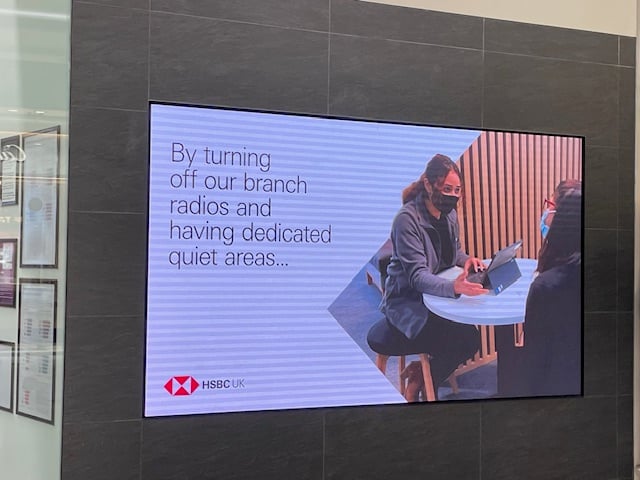Transforming Experiences for Neurodiverse Individuals through Sensory-friendly Hours and Quiet Spaces

In our noisy, complicated world, it can be easy to overlook the needs of those who experience the environment differently. Everyday settings can often be overwhelming for neurodiverse individuals. This is particularly true for those with autism, sensory processing disorder, attention deficit hyperactivity disorder (ADHD), and other conditions that affect how they perceive and process sensory information. The importance of quiet spaces and sensory-friendly hours cannot be overstated, as they provide essential environments where neurodiverse individuals can feel safe, comfortable, and included.
Understanding Neurodiversity and Sensory Sensitivities
Neurodiversity refers to the concept that neurological differences, such as those seen in autism, ADHD, dyslexia, and other conditions, are natural variations of the human brain. These differences should be recognized and respected as part of human diversity rather than pathologized and viewed through the lens of diagnosis and disease. However, neurodiverse individuals often face challenges in environments that conflict with their sensory needs and trigger adverse physical responses.
Sensory processing issues are common among neurodiverse individuals. This can include hypersensitivity to sound, light, touch, taste, and smell, making environments like grocery stores, shopping malls, schools, and workplaces difficult or even unbearable. For example, the flicker and buzz of fluorescent lights, the hum of air conditioners, or the chatter of people in a crowded space may be barely noticeable to most people. But, for someone with heightened auditory sensitivity, these noises can be overwhelming, causing stress, anxiety, physical pain, and emotional reactions.
The Role of Quiet Spaces
Quiet spaces are designated areas that offer a calm and controlled environment free from environmental sensory overload. They can be found in various settings, including schools, workplaces, transportation hubs, shopping centers, and various types of entertainment. The goal of quiet spaces is to provide a retreat where individuals can relax, recharge, and escape the stimuli that may overwhelm them, helping neurodiverse individuals navigate the world more comfortably and safely.
In schools, quiet spaces are particularly valuable for students with sensory processing challenges. These spaces allow students to step away from the hustle and bustle of the classroom or playground when they need a break, helping to prevent meltdowns or shutdowns. When neurodiverse students have access to a quiet space, they can better regulate their emotions and sensory experiences. This, in turn, supports their ability to learn and participate in school activities. Students with conditions other than neurodiversity, such as generalized anxiety disorder, hearing loss, or migraines, can also benefit from the presence of quiet spaces.
In the workplace, quiet spaces can make a significant difference for neurodiverse employees. Open-plan offices generate continuous streams of noise and visual distractions caused by close proximity between employees. A quiet room or sensory-friendly space allows employees to decompress, focus, and maintain productivity. This accommodation not only supports the well-being of neurodiverse workers but also fosters a more inclusive work environment that values and supports diversity.
Public spaces like shopping malls and airports are also beginning to recognize the importance of quiet spaces. For example, some airports have introduced sensory rooms equipped with soft lighting, comfortable seating, and minimal noise, providing a peaceful haven for travelers who may find the airport environment overstimulating. Similarly, shopping malls incorporate quiet rooms where shoppers can take a break from the noise and crowds. These spaces are particularly beneficial for families with neurodiverse children, allowing them to participate in public life without the constant fear of sensory overload.
The Importance of Sensory-Friendly Hours
Sensory-friendly hours are specific times businesses or organizations modify their general environment to reduce sensory input, making the space more accessible to neurodiverse individuals. This can include dimming the lights, lowering the volume of background music, limiting the use of public address systems, and reducing the number of people allowed in the space at one time. These accommodations can substantially improve the experience of individuals who would otherwise avoid such environments due to sensory sensitivities.

Retail is becoming a more common source of sensory-friendly hours. Many grocery stores now offer sensory-friendly shopping times, usually early in the morning or late in the evening, when the store is quieter and less crowded. During these hours, stores may also turn off fluorescent lights, reduce noise from checkout scanners and other equipment, and eliminate potentially overwhelming stimuli like loud music or store-wide announcements. For neurodiverse individuals and their families, this can transform a stressful and exhausting task into a manageable and even enjoyable experience.
Sensory-friendly hours are also becoming more common in entertainment venues like theaters, museums, and amusement parks. For instance, some movie theaters offer sensory-friendly screenings with reduced sound levels, brighter lighting, and a more relaxed atmosphere where talking or moving around is acceptable. This allows neurodiverse individuals, especially children, to enjoy movies without the anxiety or discomfort that a typical screening might cause.
Science centers and zoos have also embraced sensory-friendly hours, offering quieter, less crowded experiences with accommodations like sensory kits, which may include noise-canceling headphones, fidget toys, and visual guides as well as providing specialized training to staff. These efforts enable neurodiverse individuals to engage with exhibits and activities that they might otherwise find overwhelming. The International Board of Credentialling and Continuing Education Standards offers the ability to become a Certified Autism Center.
Amusement parks, which can be incredibly stimulating environments, are also beginning to offer sensory-friendly days or hours. During these times, the parks may reduce the noise from rides, lower the volume of background music, and provide designated quiet areas where visitors can take a break. These accommodations allow neurodiverse individuals and their families to enjoy the park's attractions without being overwhelmed by sensory input.
The Broader Impact of Quiet Spaces and Sensory-Friendly Hours
The availability of quiet spaces and sensory-friendly hours not only benefits neurodiverse individuals but also has a broader positive impact on society. These accommodations promote inclusion by making public spaces more accessible to everyone, regardless of their sensory sensitivities. This inclusivity reflects a shift towards a more empathetic and understanding society, one that values diversity and recognizes the unique needs of all its members. Staff members may feel more included and may even seek to participate in providing services during these times which will further reinforce a good customer experience.
For neurodiverse individuals, the ability to participate in everyday activities—like shopping, banking in person, going to the movies, or visiting a museum—without fear of sensory overload is empowering. It fosters a sense of belonging and independence, allowing them to engage more fully in their communities. This, in turn, can lead to improved mental health and well-being, as individuals are better able to manage stress and anxiety-related symptoms when they know they have access to a supportive environment.
For businesses and organizations, offering quiet spaces and sensory-friendly hours can be a strategic advantage. Accommodating the needs of neurodiverse customers will attract a broader customer base and demonstrate commitment to disability and inclusion. This can enhance a company’s reputation and build loyalty among customers who value accessibility and inclusivity. Employee turnover may be reduced in a work environment that is demonstrably and publicly inclusive.
The principles behind quiet spaces and sensory-friendly hours can be applied more broadly to create environments that are more comfortable for everyone. For example, reducing noise levels, providing flexible lighting options, and offering spaces for relaxation can benefit not only neurodiverse individuals but also people with anxiety, PTSD, hearing loss, or those who simply prefer quieter environments. In this way, designing with neurodiversity in mind can lead to spaces that are more welcoming and enjoyable for all.
Conclusion
Quiet spaces and sensory-friendly hours are essential accommodations for neurodiverse individuals, providing them with environments where they can feel safe, comfortable, included, and most importantly, not have their sensory systems completely overwhelmed by the standard amount of noise in busy areas. These spaces and times allow neurodiverse individuals to engage more fully in their communities, participate in everyday activities, and live more independent lives. Embracing these slight modifications inches us slightly closer to a more inclusive society—one that values diversity in all its forms and strives to meet the needs of every individual. As more businesses, schools, and public spaces recognize the importance of these accommodations, we can hope to see a world where everyone, regardless of their neurological differences, has the opportunity to thrive.
Add a comment: